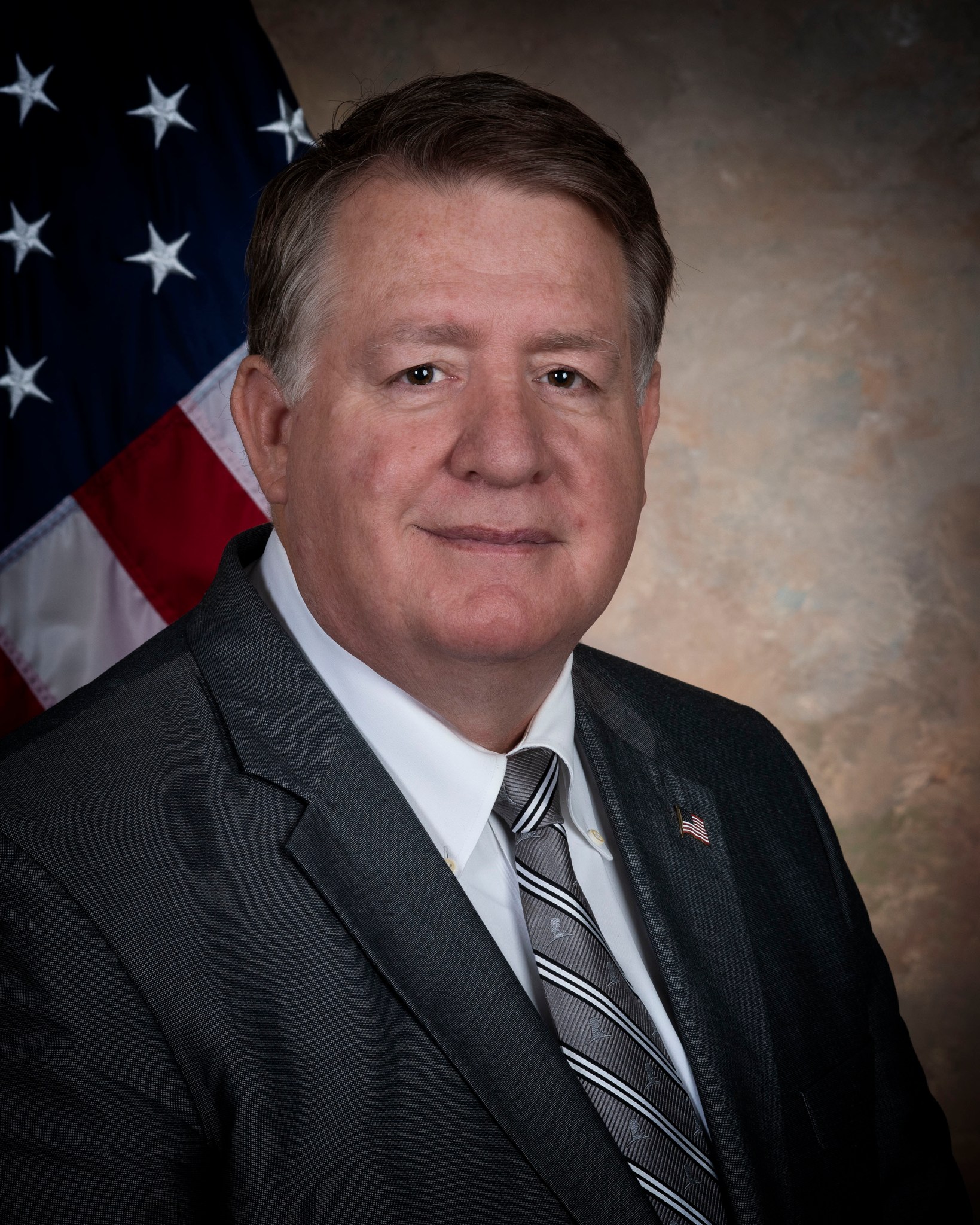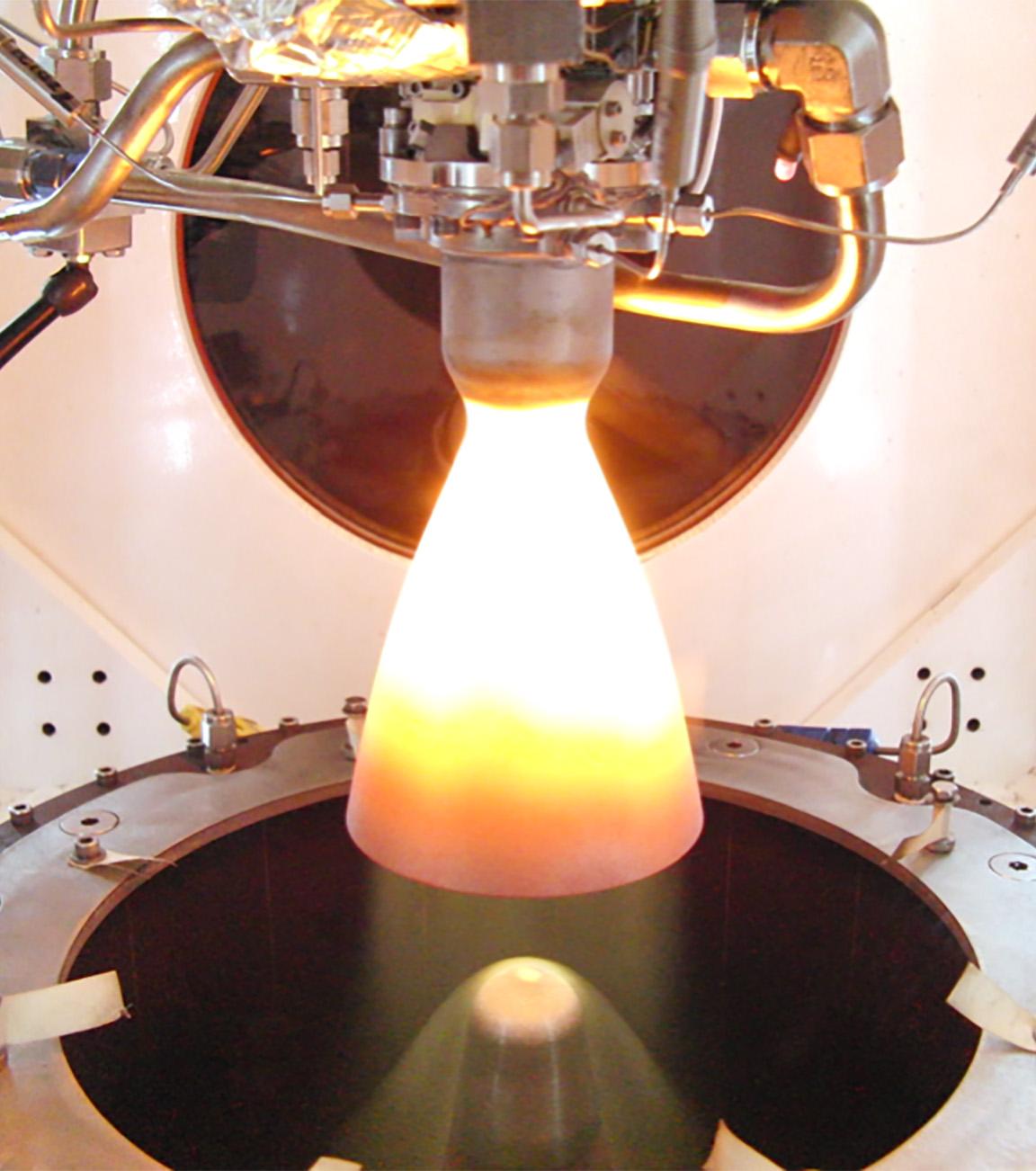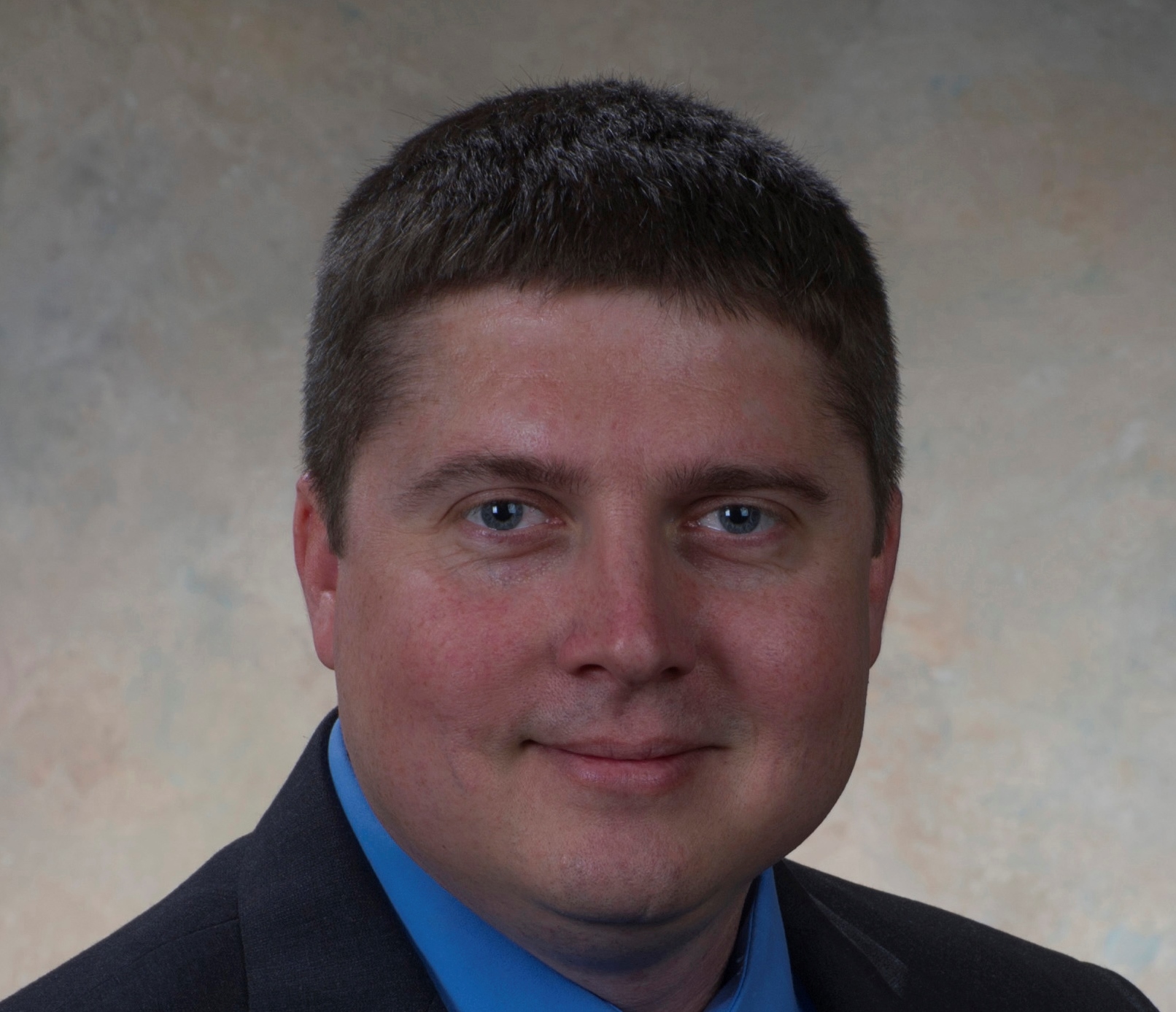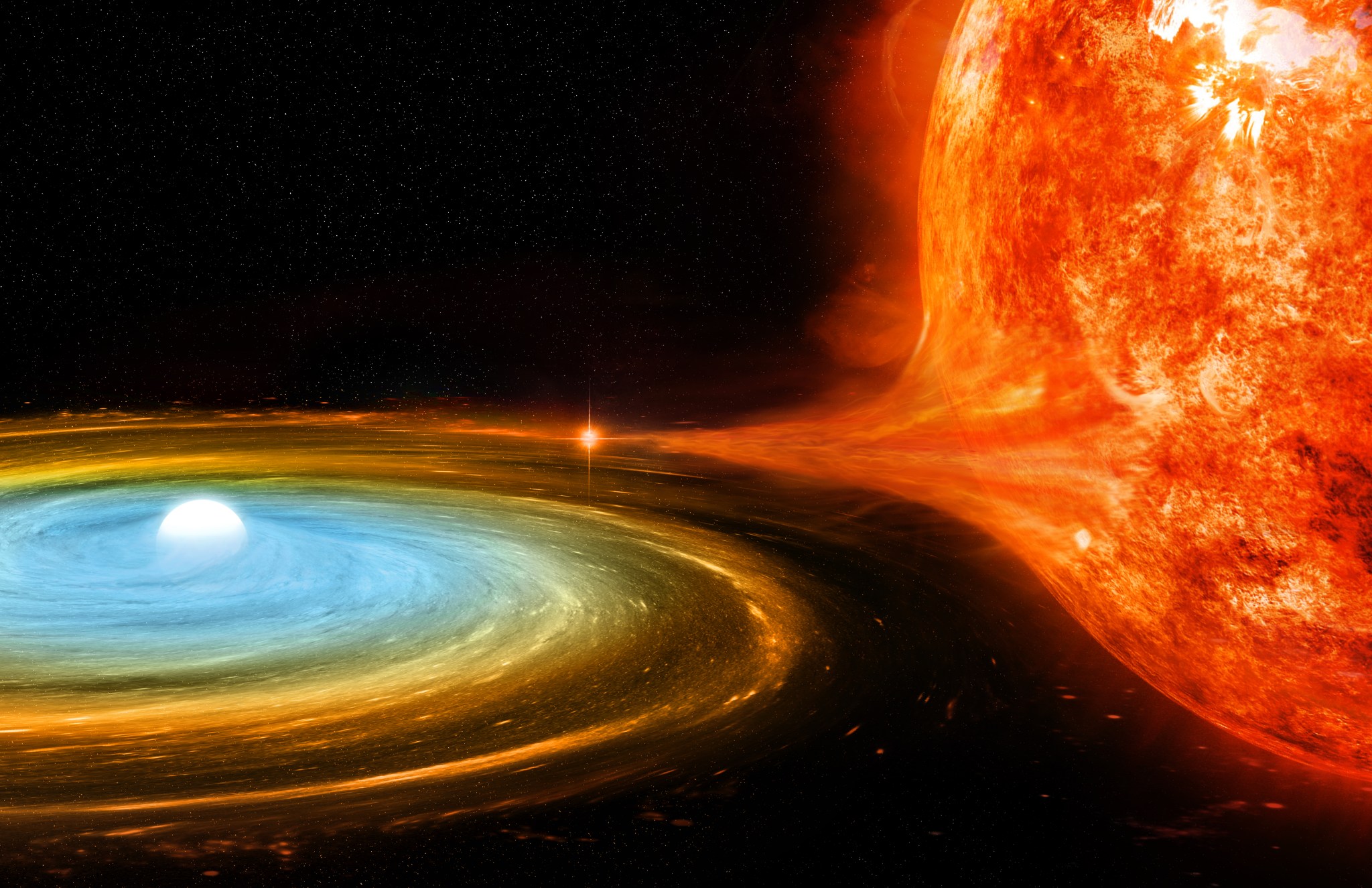In This Week’s Star
- Carl Preston Jones Named Marshall Associate Director, Technical
- SLS Rocket Support Center Comes to Life
- Get Ready Stargazers: The Geminids Are Here!
- Marshall to Host Tech Talk on ‘TALOS’ Engine Thruster Development Dec. 13
- Double Trouble: A White Dwarf Surprises Astronomers
- This Week in NASA History: S-IVB-504 Factory Checkout Ends – Dec. 9, 1966
- OSIRIS-REx and InSight Highlighted on ‘This Week @NASA’
Carl Preston Jones Named Marshall Associate Director, Technical
By Rick Smith
Carl Preston Jones has been appointed associate director, technical, of NASA’s Marshall Space Flight Center.
He will provide expert technical assistance and advice to Marshall Director Jody Singer, supporting the full spectrum of NASA engineering, science and technology work at Marshall. Working closely with senior managers across the center, he will perform special studies, advise and assist in policy reviews, and develop benchmarking strategies. In this role, Jones will ensure Marshall’s work is technically sound and achieves the goals and requirements of NASA and the nation.
“Preston’s leadership in developing and testing innovative new propulsion systems, science-enabling spacecraft and cutting-edge technologies ideally suits him to this new position,” Singer said. “In this new role, he will continue to be instrumental in forging a bold new era of deep space exploration and discovery.”
Since 2016, Jones had served as director of Marshall’s Engineering Directorate, which leads the design, development and testing of numerous NASA space systems, including life support hardware for the International Space Station, multiple flight vehicles, spacecraft and lander hardware and software systems. Under his guidance, the Engineering Directorate provided critical support to the Space Launch System — the world’s most powerful rocket, which will send astronauts to the Moon and ultimately to Mars.
Jones began his NASA career in 1982 as an engineer in Marshall’s Structural Dynamics Laboratory, where he worked as a high-frequency data analyst supporting the Space Shuttle Program launches and post-flight assessments. He was the Liquid Engine Systems Branch chief in Marshall’s Propulsion Laboratory from 1994-1997 and the Propulsion Test Division chief from 1997-2000. He moved from the Engineering Directorate to the Shuttle Main Engine Project Office, serving as the engine systems team lead from 2000-2002.
He was appointed in 2002 to the Senior Executive Service, the personnel system covering top managerial positions in federal agencies. He next lead the Engineering Directorate’s Propulsion Systems Department from 2002-2007 and its Spacecraft and Vehicle Systems Department from 2007-2011. He was named deputy director of the Engineering Directorate in 2011.
Jones received the Presidential Rank Award for Meritorious Executives — one of the highest honors presented to career federal employees — in 2008 for outstanding achievement at NASA; the NASA Distinguished Service Medal in 2014 for career achievement and technical contributions; and the Outstanding Leadership Medal in 2006 for his leadership of Marshall’s Propulsion Systems Department. In 1992, he was presented a Silver Snoopy Award from the NASA astronaut corps for his contributions to the success of human spaceflight missions.
Jones received a bachelor’s degree in physics in 1982 from the University of North Georgia in Dahlonega and has completed engineering courses at the Georgia Institute of Technology in Atlanta and the University of Alabama in Huntsville.
Jones and his wife, Betty live in Huntsville and have three sons — Coleman, Zachary and Sam — and two grandsons, Adam and Paul.
Smith, an ASRC Federal/Analytical Services employee, supports the Office of Strategic Analysis & Communications
SLS Rocket Support Center Comes to Life
A historic facility at NASA’s Marshall Space Flight Center, has been updated to support missions of the agency’s Space Launch System, the world’s most powerful rocket.
As an American rocket sends people to the Moon on bold new missions, the room once used to support missions for the Saturn V rocket and the space shuttle will begin operations with the first flight of SLS and Orion on Exploration Mission-1. Teams in the new SLS Engineering Support Center will provide critical support from the ground to monitor data and help solve challenges during the launch countdown and flight.
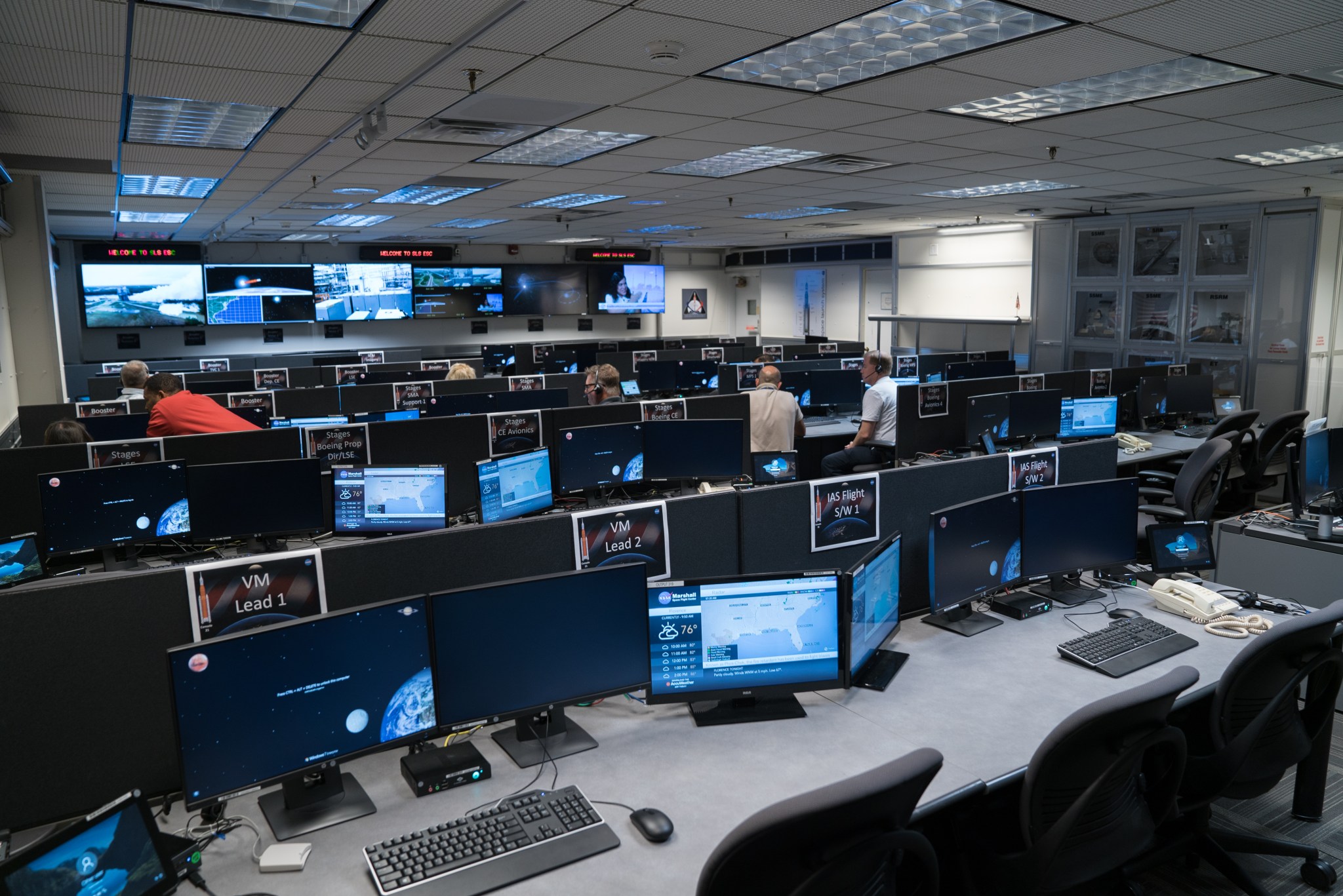
“The support center allows experts who designed and built the Space Launch System to work together, saving agency resources by minimizing the need for travel to the NASA Kennedy Space Center launch site in Florida,” said Garry Lyles, the SLS chief engineer who will be leading the SLS engineering support team from Huntsville on launch day. “We can monitor the rocket’s health with sophisticated new equipment, and should an issue arise, we can reach out to other NASA centers and contractors to perform in-depth analysis to help decision-makers in the launch control center at Kennedy.”
The technology has advanced tremendously over the last several decades, enhancing the center’s overall goal to support a successful launch. While the data stream during the shuttle era consisted of no more than one megabit per second, the support center will receive more than 25 times that amount of data for SLS.
“Voice communications among NASA centers as well as vehicle imagery and data used to monitor the rocket’s health have all been upgraded so we can perform at a higher level in support of Space Launch System missions,” said Jeff Spencer, lead of the SLS Program Vehicle Assembly and Integration Office.
Engineers in the support center are laser-focused on the propulsion system — the engines, boosters and core stage that will produce 8.8 million pounds of thrust to get to orbit, and the flight computers that control the rocket’s journey. After the boosters and core stage drop away, their focus will be on the in-space stage that will fire its engine to speed up Orion so it can reach the Moon.
One of the center’s key roles is to “keep an eye” on the rocket with cameras on the ground and on the rocket. With lower resolution video capabilities updated to high resolution, the center can check for debris during pre-launch and ice build-up as liquid oxygen and liquid hydrogen are pumped to propel the rocket.
Voice communications in support centers use “voice loops” that are linked together by satellites and allow all the different groups involved in launch and preparation to communicate via audio channels. While support centers in the shuttle era could loop in about 20 groups, the SLS Engineering Support Center will be capable of connecting up to 156. The upgraded voice system allows for wired and internet connections without any significant delays.
Video capabilities and voice communication are both necessary roles of the support center, but the most important role is providing technical expertise to the Launch Operations team located in the Launch Control Center in Florida and the Flight Operations team located at the Mission Control Center in Houston. To accomplish this, the SLS Engineering Support Center team will use thousands of measurements to address any issues that arise and provide a recommended course of action to the lead operations team. The engineering support center will also verify environmental conditions meet safety limits necessary to successfully fly the rocket through the atmosphere, including temperatures, pressures and speeds.
Exploration Mission-1 is an uncrewed mission, and the data received will allow NASA to learn as much as possible about the rocket before crew are on board with the second mission.
“As Marshall engineers who helped design and build the rocket, we need this data because, until NASA actually launches the vehicle, we can only predict how it will perform,” said Spencer. “Seeing that actual data as the rocket comes alive and lifts off will be thrilling, but more importantly, this first mission will show us exactly how SLS performs in all phases of its ground preparation and flight.”
NASA is leading a return to the Moon through an innovative and sustainable program of exploration to expand human presence into the solar system. Beginning with Exploration Mission-1, SLS and Orion will demonstrate the critical backbone capabilities that will carry humans to the Moon and farther into space than ever before on a variety of missions with increasing complexity. SLS’s unprecedented power and volume will also carry the large pieces of hardware needed to build the Gateway and other long-term infrastructure at the Moon and, later, for human missions to Mars.
Get Ready Stargazers: The Geminids Are Here!
By Bill Cooke
The second week of December heralds the beginning of the strongest meteor shower of the year — the Geminids. It’s a good time to bundle up, go outside and watch one of Mother Nature’s best sky shows!
The Geminids are active every December, when Earth passes through a massive trail of dusty debris shed by a weird, rocky object named 3200 Phaethon. The dust and grit burn up when they run into Earth’s atmosphere in a flurry of “shooting stars.”
Phaethon’s nature is debated. It’s either a near-Earth asteroid or an extinct comet, sometimes called a rock comet. There is another object — an Apollo asteroid named 2005 UD — that is in a dynamically similar orbit to Phaethon, prompting speculation that the two were once part of a larger body that split apart or collided with another asteroid.
Most shower meteors are shed by comets when their orbits take them into the inner solar system, but the Geminids may be the debris from this long-ago breakup or collision event. When you consider that the Geminid meteor stream has more mass than any other meteor shower, including the Perseids, whatever happened back then must have been pretty spectacular.
So what do potential Geminid watchers need to do this year?
It’s pretty simple, actually. The nearly First Quarter Moon sets around 10:30 p.m. local time on Dec. 13, so wait until then to go out — the light from the Moon washes out the fainter meteors, which are more numerous. Find the darkest place you can, and give your eyes about 30 minutes to adapt to the dark. Avoid looking at your cell phone, as it will mess up your night vision. Lie flat on your back and look straight up, taking in as much sky as possible. You will soon start to see Geminid meteors. As the night progresses, the Geminid rate will increase, hitting a theoretical maximum of about 100 per hour around 2 a.m.
Bear in mind, this rate is for a perfect observer under perfect skies with Gemini straight overhead. The actual number for folks out in the dark countryside will be slightly more than 1 per minute. Folks in suburbs will see fewer, 30 to 40 per hour depending on the lighting conditions. And those downtown in major cities will see practically nothing — even though the Geminids are rich in beautiful green fireballs, the lights of New York, San Francisco, or Atlanta will blot even them out. Dark clear skies are the most important ingredient in observing meteor showers.
And while you’re scanning the sky for Geminids, you might notice a small, faint “ghostly” green patch in the constellation of Taurus — that’s Comet 46P/Wirtanen, which will be making its closest approach to Earth (7 million miles) for the next 20 years. We are actually going to have a comet visible to the unaided eye this holiday season!
Comets are notoriously unpredictable beasts, but if Wirtanen continues to follow its current brightening trend, it may reach a peak magnitude of around +3 (about as bright as a star in the handle of the Little Dipper) a couple of days past the Geminid peak, on Dec. 16. Binoculars or a small telescope are good for taking a peak at Wirtanen, so bring them along for your night of Geminid watching. A green comet to complement the green fireballs!
Bill Cooke leads NASA’s Meteoroid Environment Office at Marshall Space Flight Center.
Marshall to Host Tech Talk on ‘TALOS’ Engine Thruster Development Dec. 13
Team members at NASA’s Marshall Space Flight Center are invited to a Tech Talk Dec. 13 showcasing the “Thruster Advancement for Low-temperature Operation in Space” project. TALOS, for short, is intended to flight-qualify the technology for use in an upcoming lunar mission — and could help engineers develop more cost-efficient propulsion systems for next-generation spacecraft.
Jim McKinnon, president of Frontier Aerospace in Simi Valley, California, and TALOS project manager Greg Barnett, a propulsion systems engineer in Marshall’s Science & Technology Office, will discuss thruster development and offer insight into the benefits of government-industry partnerships. Their presentation is set for 1 p.m. in Building 4220, Room 1103.
Formerly known as the Deep Space Engine thruster project, TALOS is sponsored by NASA’s Space Technology Mission Directorate and led by Frontier Aerospace. It was selected in August to support a lunar lander test mission targeted for 2020. The thruster burns MON-25/MMH propellants, which yield lower-temperature freezing points than conventional propellants — a critical capability for long-duration missions to and from the Moon, Mars and other destinations.
Frontier initially developed and tested the thrusters jointly with the Exploration Systems Development Branch of Marshall’s Science & Technology Office. Together with Astrobotic of Pittsburgh, Pennsylvania, Frontier will provide five thrusters for Astrobotic’s Peregrine lunar lander. The thrusters will be integrated into a propulsion system provided by Dynetics of Huntsville, and will support translunar injection, orbital insertion decelerations, a braking maneuver and a powered descent to the Moon’s surface.
All Marshall team members are encouraged to attend the Tech Talk. For more information, email Heather Morris or visit ExplorNet.
Tech Talks are monthly meetings which highlight cutting-edge research and technology development programs at Marshall and its partner organizations, intended to foster innovative thinking and an exchange of creative ideas across engineering, science, safety and technical disciplines. Find more information here.
Double Trouble: A White Dwarf Surprises Astronomers
Astronomers have detected a bright X-ray outburst from a white dwarf located almost 200,000 light years from Earth. Data from NASA’s Chandra X-ray Observatory and other telescopes indicate that this star may be the fastest-growing white dwarf ever observed. The new study suggests the white dwarf is pulling matter from a giant companion star, a process known as accretion, as shown in the illustration. NASA’s Marshall Space Flight Center manages the Chandra program for the agency’s Science Mission Directorate. (NASA/CXC/Texas Tech/T. Maccarone, Illustration: NASA/CXC/M. Weiss)
This Week in NASA History: S-IVB-504 Factory Checkout Ends – Dec. 9, 1966
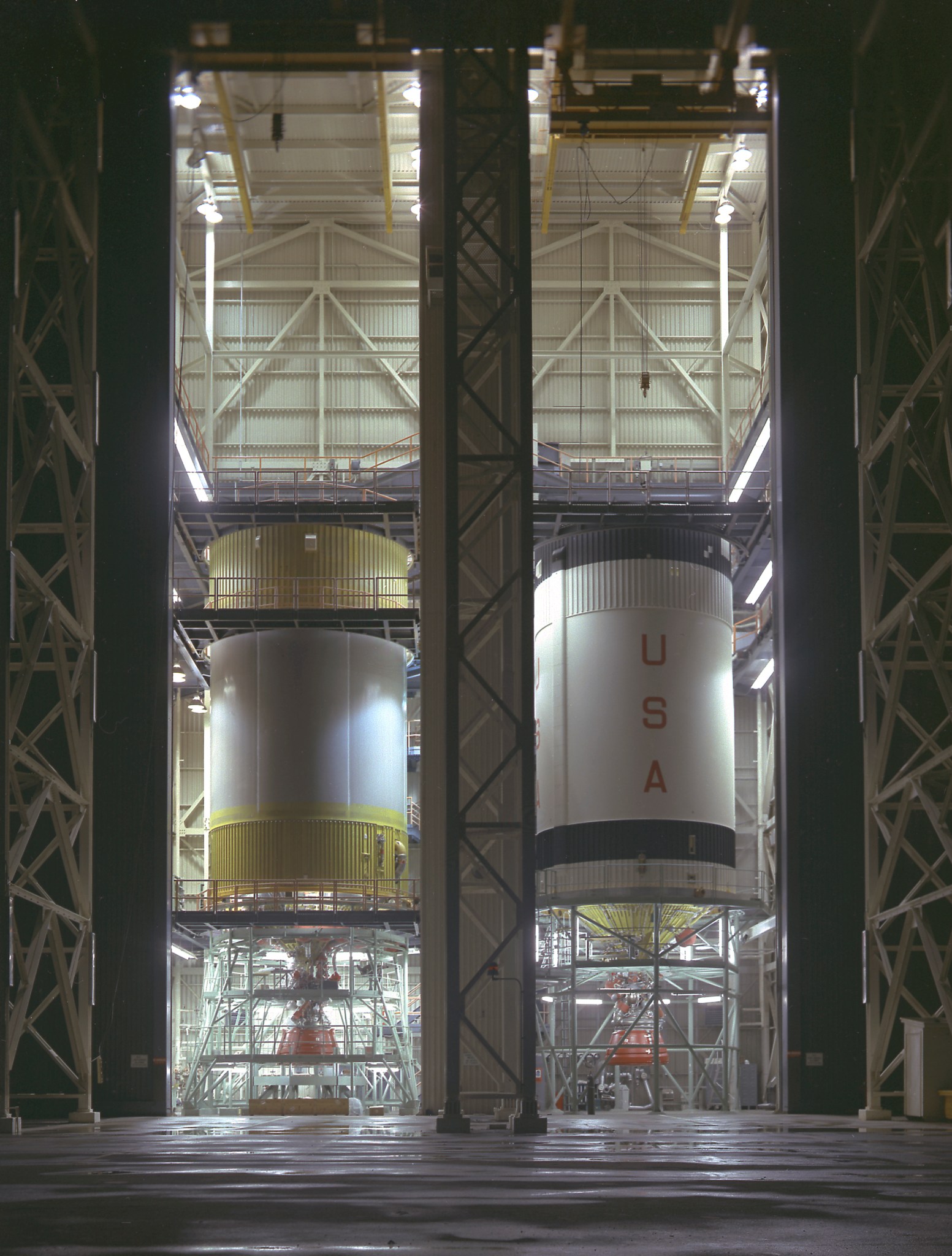
This week in 1966, S-IVB contractor McDonnell Douglas completed factory checkout of the S-IVB-504 flight stage — used on Apollo 9 — in Huntington Beach, California. The S-IVB stage was developed under the direction of NASA’s Marshall Space Flight Center and was powered by one J-2 engine capable of producing 225,000 pounds of thrust. Here, the S-IVB-505 and S-IVB-211 are shown in the McDonnell Douglas S-IVB Assembly and Checkout Tower. Apollo 8 was the first manned flight of the Saturn V vehicle and the first manned lunar orbit mission. Now through December 2022, NASA will mark the 50th anniversary of the Apollo Program that landed a dozen astronauts on the Moon between July 1969 and December 1972, and the first U.S. crewed mission — Apollo 8 — that circumnavigated the Moon in December 1968.The NASA History Program is responsible for generating, disseminating, and preserving NASA’s remarkable history and providing a comprehensive understanding of the institutional, cultural, social, political, economic, technological and scientific aspects of NASA’s activities in aeronautics and space. For more pictures like this one and to connect to NASA’s history, visit the Marshall History Program’s webpage. (NASA)
OSIRIS-REx and InSight Highlighted on ‘This Week @NASA’
The arrival NASA’s OSIRIS-REx spacecraft at Bennu and NASA’s InSight lander hearing the Martian wind are featured in “This Week @NASA,” a weekly video program broadcast nationwide on NASA-TV and posted online.
After traveling through space for more than two years and two billion kilometers, OSIRIS-REx spacecraft arrived at asteroid Bennu, on Dec. 3. The spacecraft will spend almost a year surveying Bennu to select a location on the asteroid that is safe and scientifically interesting to collect a sample. OSIRIS-REx is scheduled to return that sample to Earth in September 2023.
InSight, which landed on Mars Nov. 26, has captured the first sounds ever sensed directly from the surface of Mars. Because the sounds — which are of vibrations caused by the Martian wind — are below or near the lower range of human hearing, they’ve been processed to make them more audible. Two very sensitive sensors aboard InSight each recorded the wind noise in different ways — resulting in rather different sounds. An air pressure sensor recorded the direct air vibrations caused by the wind moving through the open air, while a seismometer recorded vibrations experienced by the lander itself as the wind moved over the spacecraft’s solar panels.
InSight is the first mission to study the deep interior of the Red Planet to help learn more about how it and other rocky celestial bodies formed — including Earth and the Moon.
OSIRIS-REx is the third mission in NASA’s New Frontiers Program. Marshall Space Flight Center manages New Frontiers for the agency’s Science Mission Directorate. InSight is a project of the directorate’s Discovery Program, managed by Marshall.
View this and previous episodes at “This Week @NASA” on NASA’s YouTube page.




























